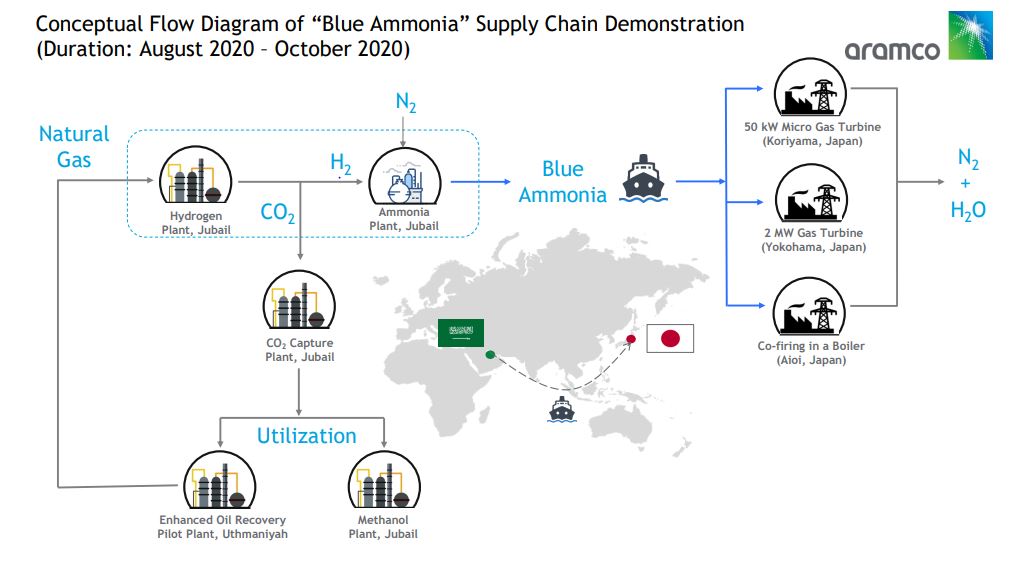Hydrogen has been known as a clean energy source. There are various kinds of Hydrogen like Green Hydrogen, Grey Hydrogen and Blue Hydrogen. The Grey Hydrogen is produced from fossil fuel sources. The Blue Hydrogen is produced from natural gas. Apart from all these, there is Blue ammonia which like blue hydrogen is made from Natural gas and occasionally from coal. The Blue ammonia also has a potential for Carbon capture and Sequestration apart from being a source of clean energy.
World is now witnessing the first shipment of 40 tonnes high-grade Blue ammonia (to be used as energy-source) being transported from Saudi Arabia to Japan. It is a part of the steps taken by Japan towards a future with cleaner energy. Under the Paris climate accord of 2015, Tokyo has taken a commitment to reduce the greenhouse gas emissions by 26% from the 2013 levels by 2030. Blue ammonia has an advantage of high hydrogen density. It can serve as a feedstock for blue hydrogen which as a fuel creates no CO2 at the end user level. Ammonia has around 18% hydrogen which makes it a feedstock for the clean fuel- H2.
While Japan is trying to switch to cleaner fuel to create a more sustainable energy matrix, Saudi Arabia is trying to clear its image as a country serving as a source of conventional polluting fuels. The sale and transport of the Blue Ammonia is a part of multiple strategies by the Saudis in creating a cleaner future, which also include programs of growing mangroves which will absorb CO2 from the air.
Air Products & Chemicals Incorporated, an U.S. based firm signed an accord in July with ACWA Power International based Saudi Arabia and the kingdom’s planned futuristic city of Neom to develop a $5 billion hydrogen-based ammonia plant which would be powered by renewable energy.
Sabic, which is a Saudi Arabia based chemicals producer and majority-owned by Aramco and Mitsubishi Corporation are overseeing the transport logistics for the blue ammonia project. This is being done in partnership with JGC Corporation, Mitsubishi Heavy Industries Engineering, Mitsubishi Shipbuilding Co. and UBE Industries.





